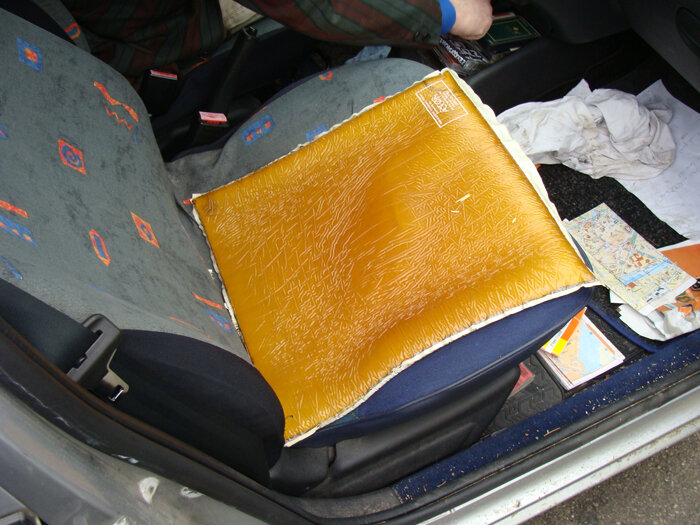Rothko Chapel, 1971.
First performed April 1972, the Rothko Chapel, Houston, Texas.
Alto Vocals – Carolyn Albiston (tracks: 1 to 5), Catherine Watson (tracks: 1 to 5), Claire Bolfing (tracks: 1 to 5), Damon E. Brown (tracks: 1 to 5), Dana Lewenthal (tracks: 1 to 5), Deborach Dietrich (tracks: 1 to 5), Francoise Debreu (tracks: 1 to 5), Leslie Mackenzie Blackie (tracks: 1 to 5), Linda Corum (tracks: 1 to 5), Ruth Mayeda (tracks: 1 to 5), Sharon Entwistle (tracks: 1 to 5), Wendy Zukas (tracks: 1 to 5)
Art Direction – Todd Reamon
Bass Vocals – Alan Lewis (tracks: 1 to 5), Alex Fordyce (tracks: 1 to 5), Doug Strickler (tracks: 1 to 5), Greg Salmon (tracks: 1 to 5), Jeff Phillips (4) (tracks: 1 to 5), Joseph Spencer (tracks: 1 to 5), Michel Galante (tracks: 1 to 5), Simon Andrews (tracks: 1 to 5), Stephen Meyer (tracks: 1 to 5), Steve Baron (tracks: 1 to 5), Takeshi Oda (tracks: 1 to 5), Victor Gavenda (tracks: 1 to 5)
Celesta – Karen Rosenak (tracks: 1 to 5)
Chorus – University Of California Berkeley Chamber Chorus (tracks: 1 to 5)
Percussion – William Winant (tracks: 1 to 5)
Soprano Vocals – Ann Millikan (tracks: 1 to 5), Clena Benzoni (tracks: 1 to 5), Elise Mills (tracks: 1 to 5), Elizabeth Ronan (tracks: 1 to 5), Jean Spencer (tracks: 1 to 5), Johanna O'Dell (tracks: 1 to 5), Katherine Peters (tracks: 1 to 5), Kristie Foell (tracks: 1 to 5), Mary Freeman (tracks: 1 to 5), Susan Hedges (tracks: 1 to 5), Torey Bookstein (tracks: 1 to 5), Verna Van Solkema (tracks: 1 to 5)
Soprano Vocals [Soloist] – Deborah Dietrich (tracks: 1 to 5)
Tenor Vocals – Adam Blankman (tracks: 1 to 5), Ching Chang (tracks: 1 to 5), Daniel Kotin (tracks: 1 to 5), Daniel Rosler (tracks: 1 to 5), John Bradley (2) (tracks: 1 to 5), John Young (4) (tracks: 1 to 5), Kai Behrend (tracks: 1 to 5), Mark Richards (4) (tracks: 1 to 5), Mitchell Morris (tracks: 1 to 5), Trevor Weston (tracks: 1 to 5), Tyler Cutforth (tracks: 1 to 5)
Viola – David Abel (tracks: 1 to 5)
If there is a Holocaust memorial in Feldman’s work, it is “Rothko Chapel,” which was written in 1971, for Rothko’s octagonal array of paintings in Houston. Rothko had committed suicide the previous year, and Feldman, who had become his close friend, responded with his most personal, affecting work. It is scored for viola, solo soprano, chorus, percussion, and celesta. There are voices, but no words. As is so often the case in Feldman’s music, chords and melodic fragments hover like shrouded forms, surrounded by thick silence. The viola offers wide-ranging, rising-and-falling phrases. The drums roll and tap at the edge of audibility. Celesta and vibraphone chime gentle clusters. There are fleeting echoes of past music, as when the chorus sings distant, dissonant chords reminiscent of the voice of God in Schoenberg’s “Moses und Aron,” or when the soprano sings a thin, quasi-tonal melody that echoes the vocal lines of Stravinsky’s final masterpiece, the “Requiem Canticles.” That passage was written on the day of Stravinsky’s funeral, in April, 1971—another thread of lament in the pattern. But the emotional sphere of “Rothko Chapel” is too vast to be considered a memorial for an individual, whether it is Rothko or Stravinsky.
Shortly before the end, something astonishing happens. The viola begins to play a keening, minor-key, modal song, redolent of the synagogue. Feldman had written this music decades earlier, during the Second World War, when he was attending the High School of Music and Art, in New York. Underneath it, celesta and vibraphone play a murmuring four-note pattern, which calls to mind a figure in Stravinsky’s “Symphony of Psalms.” The song unfurls twice, and the chorus answers with the chords of God. The allusions suggest that Feldman is creating a divine music, appropriate to the sombre spirituality of Rothko’s chapel. In a sense, he is fusing two different divinities, representative of two major strains in twentieth-century music: the remote, Hebraic God of Schoenberg’s opera, and the luminous, iconic presence of Stravinsky’s symphony. Finally, there is the possibility that the melody itself, that sweet, sad, Jewish-sounding tune, speaks for those whom Feldman heard beneath the cobblestones of German towns. It might be the chant of millions in a single voice.
But I can almost hear Feldman speaking out against this too specific reading. At a seminar in Germany in 1972, he was asked whether his music had any relationship to the Holocaust, and he said no. He was a hard-core avant-gardist to the end, despite his sensualist tendencies, and he would not freely admit to any such sentimentality. It was probably in reaction to the communicative power of “Rothko Chapel” that he later dismissed it, unbelievably, as a minor work. But in that German seminar he did say, in sentences punctuated by long pauses, “There’s an aspect of my attitude about being a composer that is like mourning. Say, for example, the death of art . . . something that has to do with, say, Schubert leaving me.” He also admitted, “I must say, you did bring up something that I particularly don’t want to talk about publicly, but I do talk privately.”
Only this one time, in the last minutes of “Rothko Chapel,” did Feldman allow himself the consolation of an ordinary melody. Otherwise, he held the outside world at bay. Yet he always showed an awareness of other possibilities, a sympathy for all that he chose to reject. Listening to his music is like being in a room with the curtains drawn. You sense that with one quick gesture sunlight could fill the room, that life in all its richness could come flooding in. But the curtains stay closed. A shadow moves across the wall. And Feldman sits in his comfortable chair.
"Alex Ross, The New Yorker"



/https%3A%2F%2Fassets.over-blog.com%2Ft%2Fcedistic%2Fcamera.png)